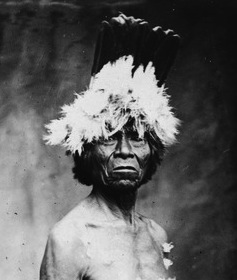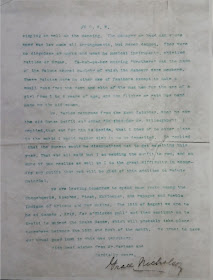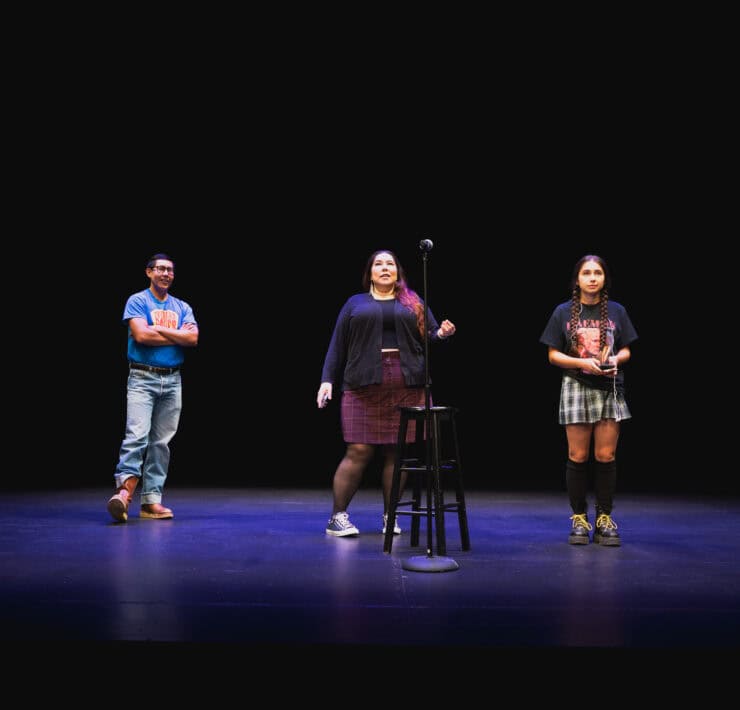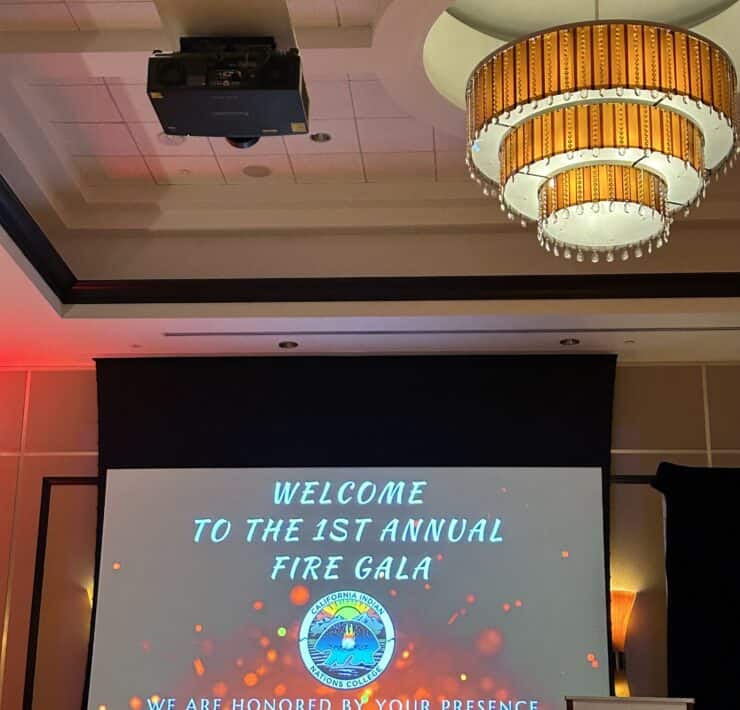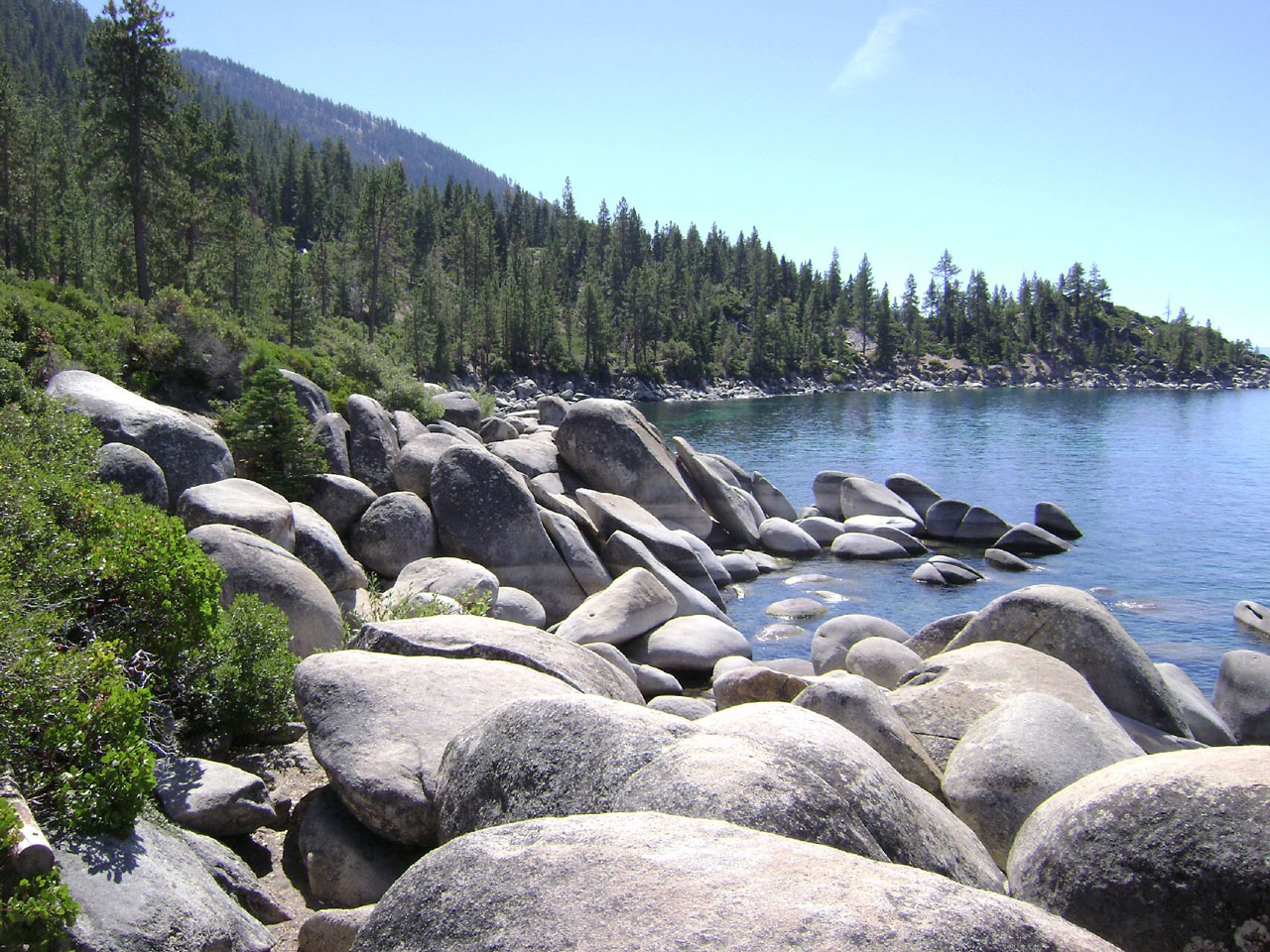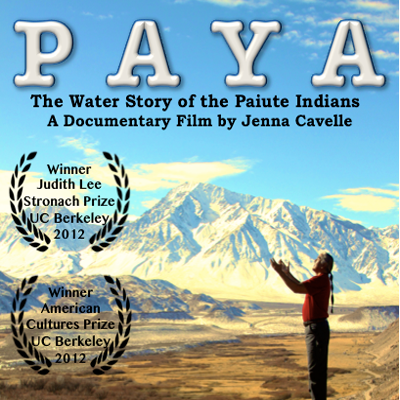I know it’s been quite a while since I have posted anything new. Lots have happened and my family has traveled quite a bit and seen many amazing things. But this past week I experienced something that very rarely happens in the museum world. I’ll tell you the story.
I have been interested in the material culture of the Great Basin for as long as I can remember. My Native lineage comes from both the Washoe and the Mono Lake/Yosemite Paiute.
The Kutzadika’a people were small in number historically and remain so even to this day. The story goes, that they were once belonging to the Pyramid Lake Paiute, but were banished long ago for being “renegades” and traveled south to settle at Mono Lake. According to the most recent scholarship, the Kutzadika’a traveled between “Hetch-Hetchy” (Yosemite Valley) and the Mono Lake Basin in a seasonal cycle.
Kutzadika’a means “brine fly larvae eaters”. The traditional names of Paiute tribes were attributed to their main foods. The “Kutsavi” is a brine fly larvae which was collected, dried and ground into a paste or eaten sprinkled over other foods. It is said to smell and taste similar to shrimp. Kutsavi is considered a delicacy and was much sought after by other tribes in the area as a trade item. On the Paiute side, my family descends from the last hereditary “Chief” of the Kutzadika’a (Kutsavi-eaters) His name is more commonly written as Captain John. He is known by many names and been often confused with other “Johns” throughout history. His own father was “Older Captain John” for example. Some have called him “Poko Tucket” or “Horse Eater” but on my family tree, his name is “Toddo’e” which means “Warm Feet”. Other names like “Shibana” and even “Young John” have been associated with him.
In the west, it was often the custom to use the term “Captain” to denote authority as in other areas of North America the term “Chief” is used. Leadership was often times hereditary but could also be obtained through a coup if the community deemed it necessary. Captain John was said to have killed Chief Tenaya (Yosemite/ Kutzadika’a) with a rock, thereby seizing leadership.
Captain John was a remarkable man who accomplished much in his lifetime. He was known as both an “Indian Doctor” and a war leader. In this famous image by Forbes, he is shown wearing his “war dance dress” with eagle down spots applied to his chest as a record of his slain enemies.
One family story which came from my Aunt Madeline Lundy (Bridgeport Paiute) told of one time when Captain John was incarcerated in the Bridgeport Jail for some unknown infraction. There was a fenced in “yard” where prisoners could be outdoors for a bit of fresh air. While he was outside, the guards said that he turned himself into a whirlwind and passed through the tall metal fence and appeared outside of the enclosure and walked off into the desert. She said that the police were afraid of him after that and never arrested him again.
Another family story says that Captain John used to run an outfitters/trading post, where he would sell all sorts of horse gear and supplies to cross the great Sierra Mountains. It was said that his “boys” would wait until the settlers got to the peak of the pass and then rob them of their gear, sending them down the mountains west into California. A surefire way to maintain your stock.
Captain John lived in a time of transition. He bore witness to the destruction of an ancient way of life and a forced colonization of his people. At the end of his time as leader, government men came among the Paiute and wanted young bodies for the army, presumedly to fight in world war I. Captain John was opposed to this and spoke out against it, he said,”Why would we fight for the United States? They have done nothing but harm us.” The people were swayed by the promises of the recruiters and so, John was no longer a Captain in his words, “He was just John” I find this sort of decision-making very profound. He stepped down when he knew he lost the support of his people, if they would not follow his advice or counsel, then how could he possibly be an effective leader?
Upon his death one obituary read, “He killed and cured many.”
I have found great pride in learning about my ancestors. I have looked for and found great wisdom and clarity. I have seen the beauty my people expressed in their basketry and in the songs and dances. I would stare at the old black & white photographs of Captain John and wondered at what he was thinking. My Great Aunt Ruby told us when she was a little child she would spend her summers with Captain John in his camp. She said that he scared and intimidated her. She has since passed on into the afterworld, and my families living link to him exists now only in the stories we tell.
Working in the museum field and now having curated the exhibits at Ganondagan’s Seneca Art & Culture Center I have always marveled at the connections some Native American families have with the beautiful objects secreted away in museum collections. I have seen first-hand when family members are reunited with object made by a long-lost relative and been humbled by the tears they shed over those objects. It never occurred to me that I would ever find myself in that very position.
For the Great Basin people, there is a commonly held custom that upon the death of a family member, their belongings are burned. This prevents the spirits of the deceased from lingering with the objects they used in life; and it prevents family members from feuding over the precious belongings. This is why it came as such a shock when my cousin Marty Meeden told me that objects existed that Captain John owned in the Peabody Museum at Harvard University.
I had been doing research on Mono Lake Paiute ceremonial dress for many years and had been trying to locate an extant headdress from either the Mono Lake, Yosemite or Owens Valley people and had found very little. Months prior, I discovered that the Peabody had a few objects in their online database which were labeled “Paiute” and I had tagged the pages and downloaded the images for study. It was really my hope, that I might be able to recreate the eagle-down headdress of my ancestors so that I might attend the “Longhouse” ceremonies of my wife’s people in my own Native dress. It wasn’t until my cousin Marty dropped this information on me that the connections became clear.
I immediately contacted the Peabody collections staff and entered a request to visit the collections and furthermore, to inquire after the objects of Captain John. This was a Friday morning when my email request was sent. It was a long shot but as it turned out, I was able to put two days together the very next Monday & Tuesday for travel but with my extremely busy schedule it would have to be then or wait until my schedule opened up in the winter. When I got home after work, an email was in my inbox from the Peabody.
The collections manager was very receptive to my request and indeed was able to accommodate my request for a visit four days hence! I could not help but feel like the path was opening up for me by some unforeseen hand. I immediately told my mother and father the tale and my father even expressed an interest in coming along! He was initially reticent but after much cajoling and more than a little encouragement from my mother he agreed to come along.
By early evening my sister had heard the story from my parents and she told me she had booked flight to Boston and would make the visit as well. When it comes to family doings the Galban clan travels in packs….
The day arrived and I alerted the Peabody staff that the numbers had swelled and that it would now be five descendants of Captain John that would visit. They were so flexible and accommodating I cannot overstate how amazing the staff at the Peabody Museum was, and their level of care and sensitivity was wonderful. Meredith Vasta was to be our guide, and she did a fantastic job. We made all the usual connections that Native people make when we first meet. Turns out we knew many of the same people and had simply not crossed paths until that day.
We had to climb to the very peak of the old stone building to find the objects; we ascended many staircases and finally a through a small crouched doorway into a tiny storage room we were presented with the objects.
On the table were our Grandfathers eagle-down headdress, his crow feather and magpie center cluster, and his eagle-down kilt. Tears began to flow as the excitement and anticipation that had built up was released. The collections staff has tissues cloak at hand, a sign that they had experience in such matters.
I cannot find the words to express the feelings I experienced as I studied the ceremonial clothing of our ancestor. The objects were in pristine condition; the Peabody was an apt facility and had done their job to the highest degree. The headdress looked as if it came off of his head that morning.
I carefully inspected the objects and enlisted my daughter into being the official photographer for our visit. She did an amazing job and I credit her with all of the documentary images of our trip.
I was able to handle the clothing and photograph every inch as I heard my father re-telling the story of how we ended up in the east to Meredith. By the time he had gotten to our most recent move to New York State, my sister interrupted and told Meredith that someone was knocking at the tiny door. Meredith though this was strange because virtually no one came up into this small storage area. She opened the door to find that indeed no one was there. Everyone had chills and I can’t help but think that perhaps the spirit of Captain John stopped by to see his progeny and check out his clothing one last time.
Meredith told us that she had found the letter that came with the collection and which documented its chain of custody and even gave some more insight into the objects and what they represented. Not only did we have photographs of Captain John wearing the objects, we now had a very well documented provenance and then to compare the objects with the information and photos – it was as solid a story as I had ever known.
The visit didn’t end there however. Meredith then told us that she has found some other objects which were also attributed to Captain John. We left the tiny roof-top room and went into a larger storage area to see played out on a table, his bow, a set of three arrows and even a willow basket hat from one of his wives! It was incredible. I just stared at them. I gingerly held the bow and could actually feel the strength inits limbs. I carefully held each arrow and marveled at their symmetry and the delicate obsidian points. I noted that they were fletched in different bird feathers. I saw eagle, and owl and what was perhaps crow. I traced the deer sinew backing along the edge of the wooden bow – I think it might be a juniper wood bow. Maybe someone who knows western bow woods will be able to tell me. The graceful flow of the recurved limbs and the taught bowstring still fastened at the nocks was a thing to behold. I could see small areas where ceremonial paint was still visible and which matched the small red stains on the eagle-down kilt we had just viewed.
I found myself transported back in time. It was an experience few will have; I recognize that fact and know how special it truly is. We were able to touch our past in a way that would not have been possible had not dozens of events been in place. The voice of Captain John came through in the objects he valued in life. I feel like he invited us there and called out to us and we met at that nexus. His children heard the call and we came and hopefully other family will come too now that the path has been opened.
 |
| Captain Johns House |
I will caption the following photos as best as I can. I invite others to share their knowledge and stories here and correct any mistakes I may have made. We are just people and sometimes we can recall things differently. There is no shame in learning.
I have permission from the Peabody Harvard Museum to post these photographs on this blog. Please respect their policies and use them for educational purposes only. If you are also a descendant of Captain John please make contact with our branch and share what you know about our family. I am posting this article for all the children of Captain John that we can know him better and learn more from what he has left us and what the world of museums has afforded us.
 |
| My father, my son and I with Captain Johns ceremonial clothing |
 |
| “Kwo wunoodunna” eagle-down headdress/turban |
The eagle-down headdress is a circlet of rolled leather which has a cord of two-ply dogbane wrapped around it in a spiral. The eagle-down or small body feathers are twined into the cord so that as the cord is made, the feathers spread out and make a “rope” of feathers – much like the way a rabbit skin robe is made. The tube is then simply tied together behind.
 |
| Detail of the white buckskin rolled tube which is worn to the back of the head |
 |
| A detail from the kilt – but it shows the method of twining the dogbane and eagle-down cordage |
Traditionally, the eagle-down turban can be worn by any man, but when a center “crown” is worn, only medicine people wear magpie feathers. In the most recognized photograph of Captain John he wears his golden eagle tail crown, which can also be worn by any Paiute man. However, the example in the Peabody is his ceremonial crown of magpie feathers. What an honor to be able to hold my ancestors medicine hat. It was hard to keep my hands steady at first, and I felt very apprehensive about touching it – but I quickly felt a sense of calm in the room and I accepted that as my invitation.
 |
| There are two cords which hold the crown down to the top of the head |
 |
| A detail of the split crow feathers |
The body of the crown is made of split crow feathers. The pith is cut at even intervals which gives them a beautiful contrasting effect. The ends are simply folded back onto themselves and bound with cordage. Then they are fixed in a spiral to a base. Sometimes, the base was made of basketry – in Captain Johns example, it was knit from yarn.
 |
| The center cluster of magpie feathers |
The center standing feathers are magpie and the base of which are bound in mink fur with quail feathers. They have a keeper-cord which connects them mid-way up and keeps them upright.
 |
| Detail of the sinew wrapped magpie feather ends. |
The eagle-down kilt was amazing as well. Here is an image of Owens Valley Paiute men wearing them for reference.
 |
| Captain John wearing his eagle-down kilt |
 |
| Captain John’s Kilt |
The traditional kilt is made by stringing strands of cordage and twisted eagle-down tipped with mink fur and trimmed feather tips onto a main belt-cord. I saw owl, hawk, magpie and even turkey feather tips on his kilt.
 |
| Detail of feather and mink fur tips |
 |
| Another detail showing assorted feathers |
 |
| A very happy grandson |
 |
| The leather belt which the strands of cordage hand from |
 |
| The Galban clan (and Meredith) with Captain Johns clothing |
 |
| I think my little sister Dr. Evelyn Galban was having a good time |
But that wasn’t the end…
Meredith revealed to us that not only did they receive the clothing, but they also have his bow, arrows and one of his wife’s basketry hats! I was blown away.
 |
| Captain John’s bow |
The bow was recurved with sinew-backing. Sinew backing is a layer of animal sinew played over the back of the bow smoothed out and attached with hide glue. The bow was still strung and the string in great shape. The temptation to draw it was nearly overwhelming.
 |
| The sinew-backing |
 |
| Detail showing the wrapped nock and sinew string |
The string was a two-ply sinew string. The buckskin wrapping on the post nock was interesting – I think it might have been to soften the noise of the string as it is released. Bowyers please make comment if you understand this better than I do?
 |
| a detail of the wood grain |
The wood is a mystery to my eye. I want to think it’s a juniper-wood bow but I really don’t have much experience with western woods. I know eastern bow woods like hickory or ash but this was new to me. If anyone can ID the wood, please write me and share the knowledge.
 |
| The grip |
The hand grip was wrapped in cotton canvas and bound in butchers twine and cloth braid. This was probably done by the last owner of the bow and not original to the piece. You can see the darkened areas on either side of the grip which show the original wrapping.
 |
| A shot of the bow next to the five arrows collected at the same time |
 |
| Detail of the fletching |
 |
| Detail showing the foreshaft and obsidian tip |
 |
| Detail of the arrow nock |
 |
| Owl and Golden eagle feather fletching
|
 |
| Paiute basketry hat of the wife of Captain John |
The wife of Captain John is not named in the records of the hat. We can only guess as to which of his wives was the owner. There are very faded designs in the weave which, over time have faded quite a bit.
 |
| Detail showing the staggered triangle pattern still evident on the interior |
The last bit of information I can share comes from the documentation which came with the objects. This for me, was the undeniable truth in the matter. Not only do we have the photographs of Captain John wearing the objects, we also have the supporting letter that identifies the objects as coming directly from his daughter (Paiute Jennie married to John Goodall, Paiute from Independence, CA)
 |
| John Goodall, Paiute – Independence, CA |
 |
| “Paiute Jennie & Grace Nicholson” this is possibly the daughter of Captain John “Jennie John” possibly wearing the hat in the Peabody? |
 |
| Original letter which accompanied the objects from Grace Nicolson |
I owe a debt of gratitude to Grace Nicholson, and to Paiute Jennie and to the Peabody Museum for being such good caretakers of my ancestors objects. I encourage all of the descendants of Captain John to share any information they may have. My hope is to ultimately find a venue in California or Nevada where we might mount an exhibit of these objects. I think it would be nice if they returned home for a little while to visit. If anyone knows of such a place, please let me know! Thank you for reading.
